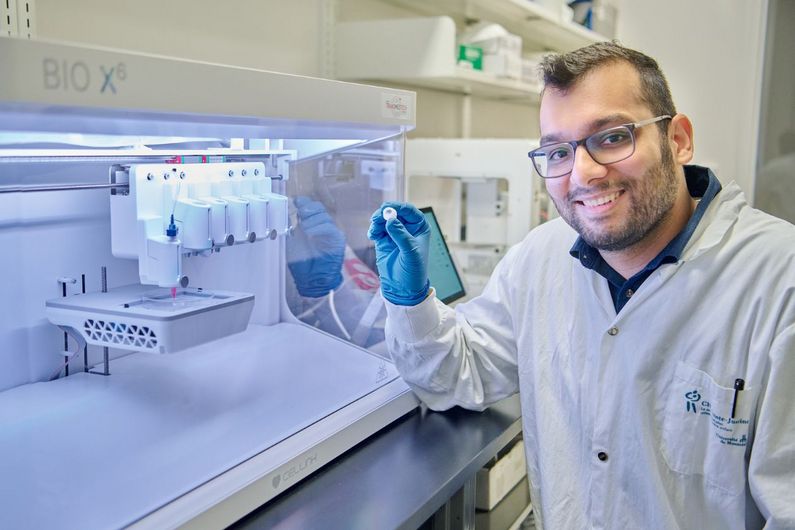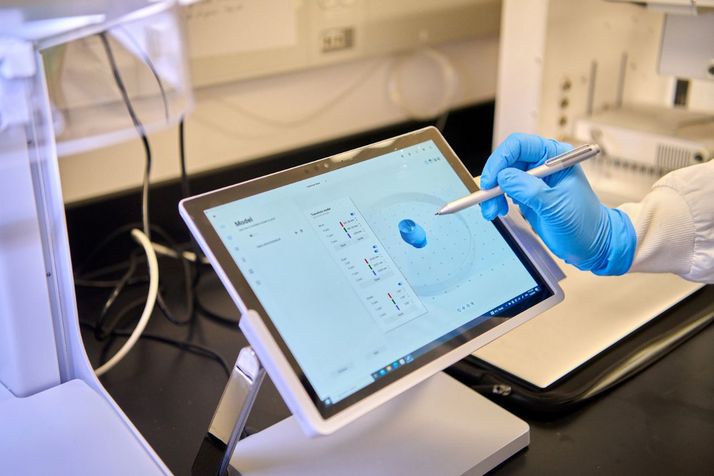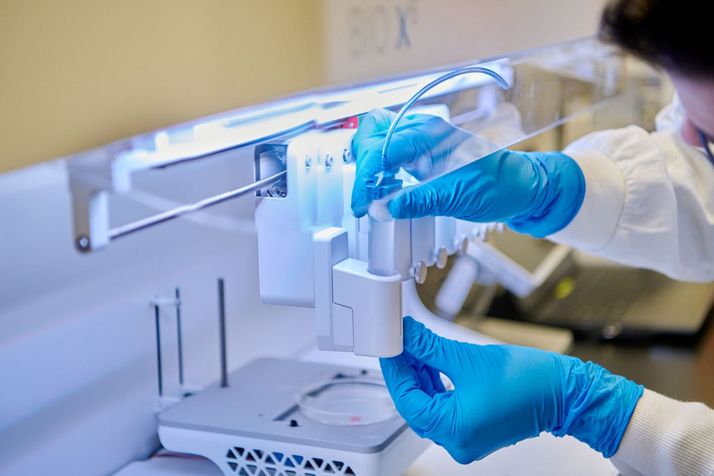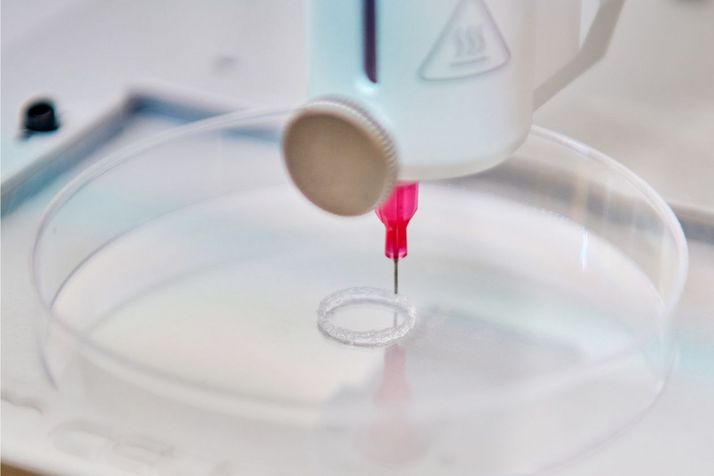3D printing of heart valves: a major breakthrough
- Salle de presse
11/30/2023
- UdeMNouvelles
Researchers at CHU Sainte-Justine find a way to use 3D printing to produce heart valves for eventual use in surgery on children with cardiac defects.
In a breakthrough in pediatric cardiac science, Canadian researchers have successfully produced a bio-ink that could someday be used to print functional, durable heart valves, offering hope for improving the prognosis of children with heart defects.
The discovery of a way to 3D print functional heart valves was made at the CHU Sainte-Justine Research Centre by Université de Montréal assistant medical professor Houman Savoji and his PhD student Arman Jafari.
The results of their research are published in the journal Advanced Functional Materials.
Tissue engineering can be used to create living tissues and organs by combining biomaterials with cells. Unlike mechanical heart valves, engineered biomimetic valves could develop and grow with the recipients. Such tissues and organs could someday be manufactured with a 3D printer, with the right bio-ink such as that developed by Savoji and his colleagues.
“My team has shown that an ink composed of polyvinyl alcohol, gelatin and k-carrageenan can be used to print heart valves that open and close correctly and has in-vitro and in-vivo biocompatibility and anti-thrombogenic properties," he explained. "They function well in a physiological environment like that of the human body, in both adult and children’s sizes."
This compound also provides a structure (called a “scaffold”) in which stem cells can potentially grow until they are replaced by a fully living tissue. Better still, in laboratory tests the valves generated fewer adverse effects than the mechanical or animal valves currently used in patients.
“These results suggest that our valves may be associated with a lower risk of complications than those currently used in transplants,” said Jafari. “And since these are biomimetic artificial tissues, they can potentially grow with a transplanted child, limiting the need for repeat surgery.”
Over the next few years, the scientists plan to pursue their research through in vivo trials, with the ultimate goal of seeing this technology one day be made available for use in a real-life, surgical setting.
About this study
“Formulation and evaluation of PVA/gelatin/carrageenan inks for 3D printing and development of tissue-engineered heart valves,” by Aman Jafari et al, was published Oct. 10, 2023 in Advanced Functional Material. Funding was provided by the Fonds de recherche du Québec – Santé, the Natural Sciences and Engineering Research Council of Canada, the TransMedTech Institute, the CHU Sainte-Justine Research Centre and Université de Montréal. The Savoji lab also benefits from equipment funded by CHU Sainte-Justine Foundation. Arman Jafari also received a doctoral scholarship from the FRQS and a bursary of excellence from Université de Montréal’s Faculty of Medicine.
Media contact
-
Danika Landry
CHU Sainte-Justine -
Jeff Heinrich
Université de Montréal
Tel: 514 343-7593


















